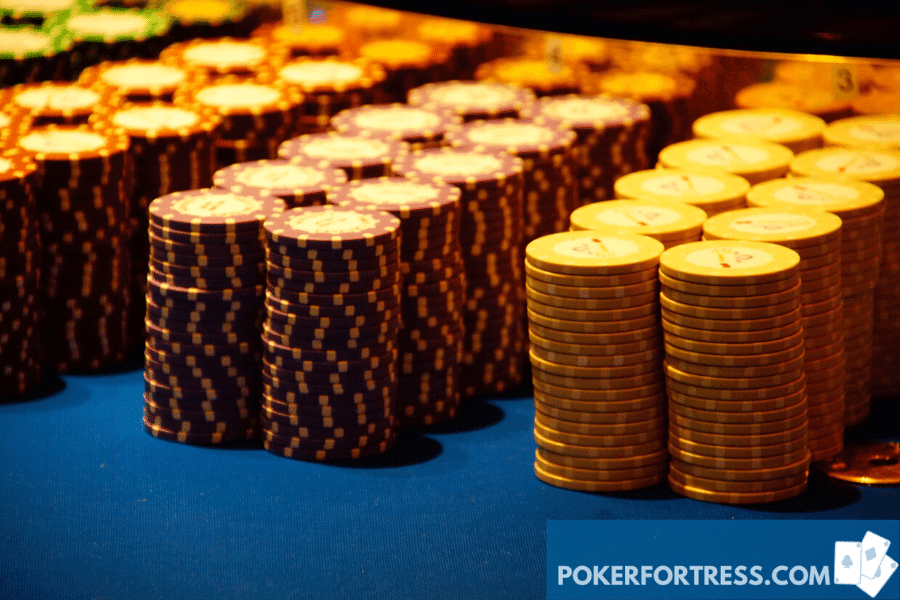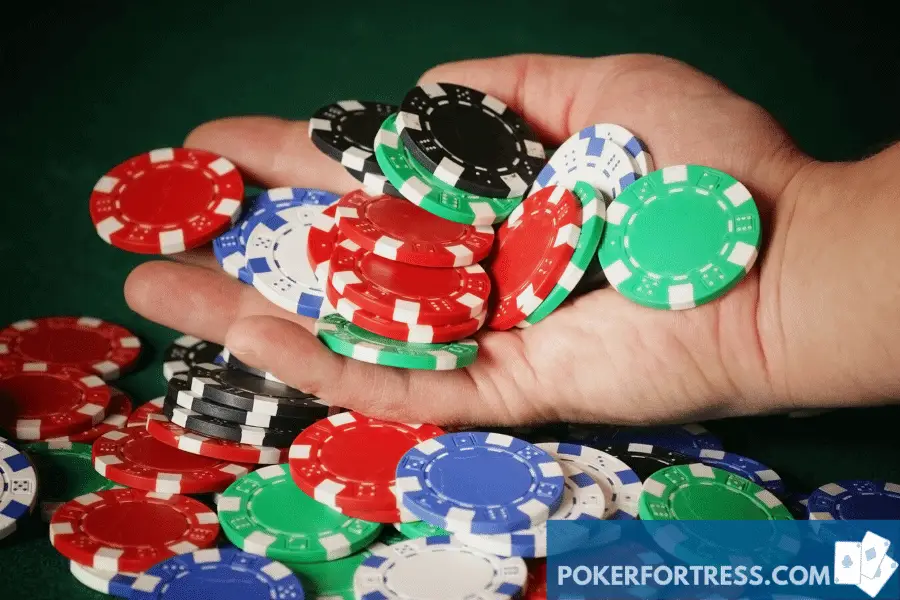Casinos love to make money; they spend surreal amounts for space, maintenance, and staff to make their establishment or platform an ideal place for people to play.
Unlike other casino games, you’re not trying to beat the house in poker. Instead, you’re playing against other players with the intent of taking their money.

If you’re not trying to beat the house, there’s no house edge, and casinos won’t make money from you! So how come poker rooms are some of the most luxurious spaces in a casino? Why would they even have a cardroom in the first place if they can’t make money from it?
Some casinos focus more on luxury, while others on amenities and service. Here is our list of best poker rooms in the U.S.
Enter poker rake. It’s the fee that casinos charge at every hand in poker. The more they make their cardroom ideal for players, the more money they make.
But poker rake is not as simple as taking out a small fee every time a player wins. There are variations to it, and could very well influence the stakes that you play, and the strategies that you use.
Poker Rake Explained
Poker rake is a widespread practice of taking a commission from every hand in a poker game. It creates the house edge and is where casinos make their money. So whenever you play poker, you have to pay casinos for your participation.
Poker rake is not the same in every casino. It varies based on what you’re playing, where you’re playing, and how much the casino charges. So before you start making that poker bread, it would be best to familiarize yourself with the different types of poker rake.
Pot Rake
Pot rake is the most common way for casinos to make money in poker. It’s also the easiest to implement because a dealer will only take a small portion of the pot upon completion. Every time a player wins the pot, casino dealers will take anywhere from 5% to 10% as long as the hand makes the flop.
Most casinos implement a no rake policy for hands that don’t get to the flop. For example, if a player raises preflop and all the players fold, the dealer won’t take out a rake and would proceed to the next hand.

Fixed Fees
Casinos introduced fixed fees because pot rake is not ideal for high stakes poker. Players may not be comfortable paying 5% to 10% of a $1,000 pot every time they win. The introduction of fixed fees countered this dilemma and still allowed casinos to collect a decent rake after each hand.
Instead of having their dealer calculate the cost for each pot, which varies a lot, casinos will alternatively collect a fixed amount after each round. It makes the collection more acceptable for high stakes players without compromising the profits that casinos make.
Timed Collection
A timed collection is a more sophisticated type of rake. It’s a fixed amount that the casino collects from each player for a predetermined amount of time that they spend on the table. For example, a casino will charge each player $50 for every hour that the table plays. Players must pay this fixed amount, regardless of how many hands they played and whether they are on the winning or losing side.
Timed collections are more like pay to play at the table; the longer you play, the more you pay. You’ll usually see this type of poker rake in on-site casinos because it’s easier to collect and is a popular alternative for high stakes players.
Dead Drop
Dead drop poker rake is another way for brick and mortar casinos to make money. Unlike a pot rake where only the winner of the pot pays the rake, dead drop rake is a predetermined fixed amount that the player on the button needs to pay before the hand begins. The amount of dead drop rake is relative to the stakes of the table.
Since the button rotates after each hand, dead drop rake creates a sense of parity between all players. They all have to pay roughly the same amount to play, regardless of the money that players make.
Tournament Fee
Tournament fees are most common for online poker sites. It’s easier to understand because online casinos are required to publish it when accepting entries. The average rate for tournament fees is equivalent to 10% of the buy-in, but casinos can drop the percentage of the rake, depending on the buy-in.
Tournament fees cover all the costs of running a tournament, together with the maintenance and security of the platform. This fee should also include the money that casinos keep for profit, but some poker sites charge this fee on top of the commission they take from the prize pot.

No Rake
It may sound too good to be true, but there are a lot of casinos that offer no rake promotions and special offers. It’s easier to participate in no rake tournaments because you only pay for the tournament buy-in. It’s a great way to build your bankroll and should be a top priority when looking for a poker room where you can play.
Some casinos use poker as a gateway to their platform by offering no rake to poker players. They, in turn, use it to get their players hooked into their ecosystem where more profitable games are more accessible.
1/2 No-Limit Hold’em Rake
When you play 1/2 No-Limit Hold’em, you’ll notice a very common rake calculation that goes like this: 5% to 10% of the pot. Capped at $3 to $7.
It’s the industry standard and will vary based on the casino where you’re playing. 10% is becoming more and more common these days, but since it’s no-limit hold’em, casinos rarely lose players. The percentage that casinos take from each pot doesn’t matter because the cap is what players usually pay every time they win a hand at no-limit hold’em.
Online casinos implement these caps because it costs them less to run an online poker room. It’s also easier for them to entice new players to participate in their platform because no-limit is notorious for huge pots that blow the blinds out of proportion.
Knowing the rake that casinos take is important in calculating your equity when going all-in or calculating if you have the odds to make the call. It’s the average that you pay per hour and will help you determine how profitable you are when playing poker.
Poker pros who love playing at microstakes know what the rake is, even before they start playing.
For example, a tight player who plays fewer hands will win less pots per hour. So the rake per hand that he needs to pay will be significantly higher than a player who plays more hands per hour. Tight players need to win considerably larger pots to make the same amount as someone who plays faster, small scale hands.
If you’re a tight player, you can reduce your equity rake by moving up the stakes ladder and play at 2/5 No-Limit. Although the rake will be considerably higher than 1/2 No-Limit, the pot you’ll get from winning higher stakes will let you make more per hour, even if you play slow and tight.
Conclusion
Poker rake is an integral part of developing a winning strategy.
As more and more alternatives become available to players, poker rake gets lower, making it easier for players to build their stacks.
Unlike in online poker games, where rakeback is essential for poker pros, in live poker games mostly you can’t rely on this guaranteed income.
Some players devise a plan on how they can improve their average wins, without adding significant risks in their strategy. Each has its merit, and different types of players can use these rakes to their advantage when finding a game to play.



